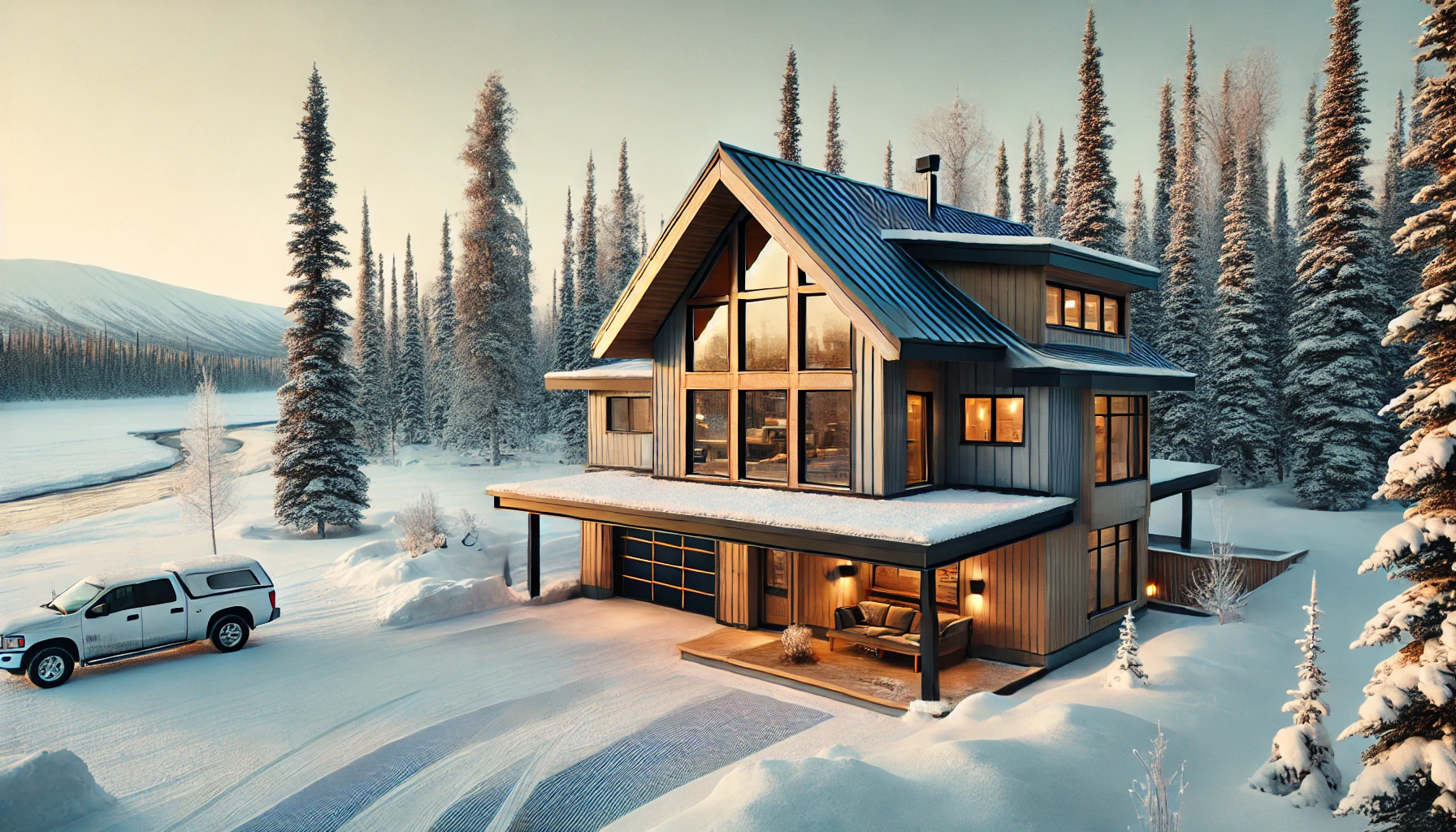Mastering Alaska's Terrain:
Pro Tips for Durable and Weather-Resistant Homes

Understanding Alaska's Unique Terrain Challenges
Building a home in Alaska requires an in-depth understanding of the state's diverse landscapes. From permafrost in the northern regions to coastal erosion and mountainous terrains, each environment presents distinct challenges. Homeowners must assess soil stability, drainage capabilities, and climate conditions before starting construction. Working with a local geotechnical expert can provide essential insights into the land's suitability for building.
Alaska's seasonal changes can also impact home construction. The freeze-thaw cycle causes ground movement, which can lead to structural instability if not properly addressed. Additionally, heavy precipitation and shifting soils require specialized drainage solutions to prevent flooding and foundation damage.
Choosing the Right Foundation for Stability
A strong foundation is crucial for homes built in Alaska's unpredictable terrain. Depending on the location, common foundation types include:
-
Pile Foundations: Ideal for permafrost regions, as they prevent heat transfer that could cause the ground to thaw and shift.
-
Slab-on-Grade Foundations: Suitable for areas with minimal soil movement and lower frost depths.
-
Elevated Foundations: Essential for flood-prone zones, particularly near rivers and coastal areas.
In remote areas where accessibility is a challenge, foundation materials must be carefully selected to withstand transport limitations. Precast concrete or modular foundation systems can be used to expedite construction and enhance durability.
Weatherproofing Strategies for Harsh Climates
Alaska's extreme temperatures, heavy snowfall, and high winds demand advanced weatherproofing solutions. Key strategies include:
-
High-Performance Insulation: Spray foam and rigid foam board insulation reduce heat loss and improve energy efficiency.
-
Triple-Pane Windows: These help retain indoor heat and minimize energy costs during frigid winters.
-
Storm-Resistant Roofing: Metal roofing is a popular choice due to its durability, snow-shedding capabilities, and resistance to strong winds.
-
Wind-Resistant Siding: Fiber cement and engineered wood siding offer superior protection against high winds and moisture.
Additionally, proper ventilation is essential in cold climates to prevent condensation buildup, which can lead to mold growth and wood rot. Vapor barriers and attic insulation should be optimized to ensure indoor air quality and longevity.
Heating Solutions for Maximum Efficiency
Staying warm in Alaska requires more than just standard heating systems. Efficient heating solutions help maintain comfort while minimizing energy costs:
-
Geothermal Heating: Uses the Earth's stable temperatures to provide efficient warmth year-round.
-
Radiant Floor Heating: Offers consistent and efficient heating without relying on forced air.
-
High-Efficiency Wood Stoves: A sustainable and cost-effective backup heating option for off-grid homes.
-
Pellet Stoves: Provide an eco-friendly heating alternative with high energy efficiency.
Smart thermostats can further optimize energy use by regulating indoor temperatures based on occupancy and weather conditions. Zoned heating systems can also help homeowners manage energy consumption more efficiently, keeping frequently used areas warm while reducing energy waste in unused spaces.
Sustainable Water and Plumbing Solutions
Alaska's cold climate presents challenges for plumbing systems, requiring specialized solutions to prevent freezing and maintain reliability:
-
Insulated Water Pipes: Proper insulation prevents pipe bursts during extreme cold spells.
-
On-Demand Water Heaters: Reduce energy consumption by heating water only when needed.
-
Septic and Greywater Recycling Systems: Help manage waste effectively in remote locations with limited access to public sewer systems.
-
Heat-Traced Pipes: Equipped with electric heating elements to prevent freezing in extreme temperatures.
Water conservation is also crucial in certain areas where natural water sources may be scarce. Rainwater harvesting and purification systems can supplement traditional water supplies and ensure a consistent, clean water source.
Designing for Snow and Ice Management
Managing snowfall and ice buildup is essential to prevent property damage and ensure safety. Design considerations include:
-
Heated Driveways and Walkways: Prevents ice accumulation, reducing slip hazards.
-
Steep Roof Pitches: Allows snow to slide off naturally, preventing roof overload.
-
Extended Eaves and Covered Entrances: Protects entryways from snow accumulation and icicles.
-
Roof Snow Guards: Prevent large chunks of snow from sliding off suddenly, reducing the risk of injury or damage.
Proper landscaping can also help manage snow buildup. Windbreaks, natural slopes, and strategic placement of trees and structures can reduce snow drifting and accumulation around the home.
Building for Longevity and Resale Value
A well-designed home in Alaska not only provides comfort but also holds long-term value. Durable materials, energy-efficient features, and sustainable building practices contribute to a home's resilience. Additionally, maintaining a home with proper weatherproofing and insulation ensures it remains attractive to future buyers seeking properties built for the unique Alaskan environment.
For homeowners considering future resale, incorporating modern amenities and energy-efficient upgrades can significantly increase property value. Features such as solar panels, smart home technology, and backup power solutions are highly desirable for buyers looking to live comfortably in Alaska's rugged conditions.
Conclusion: Thriving in Alaska's Demanding Landscape
Mastering Alaska's terrain requires careful planning, innovative construction techniques, and a commitment to durability. By choosing the right foundation, implementing weatherproofing solutions, and incorporating sustainable design features, homeowners can create properties that withstand the state's rugged conditions.
Additionally, staying informed about emerging construction technologies and local regulations ensures that homes remain compliant with safety standards and future-proofed against evolving environmental challenges. With the right strategies in place, an Alaskan home can offer unparalleled comfort, efficiency, and resilience for years to come.